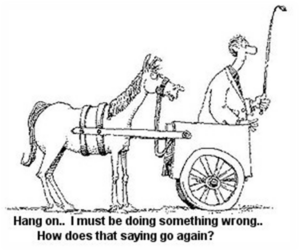Job Shock, Part Two
Job Shock, Part Two
Edward E. Gordon, the founder and president of Imperial Consulting Corporation in Chicago, has consulted with leaders in business, education, government, and non-profits for over 50 years. As a writer, researcher, speaker, and consultant he has helped shape policy and programs that advance talent development and regional economic growth. This week, he continues his blog series with Job Shock, Part Two.
Gordon is the author or co-author of 20 books. His book, Future Jobs: Solving the Employment and Skills Crisis, is the culmination of his work as a visionary who applies a multi-disciplinary approach to today’s complex workforce needs and economic development issues. It won a 2015 Independent Publishers Award. An updated paperback edition was published in 2018.
Job Shock, Part Two – by Ed Gordon
Part II: What Has Changed?
Job Shock: Solving the Pandemic & 2030 Employment Meltdown
Would You Use a Videotape in a Blu-ray Disc Player?
The days of semi-skilled blue-collar factory jobs are fast disappearing. These jobs once provided a 19-year-old high school graduate or drop-out with the wages and benefits needed to support a family with a middle-class standard of living. Thinking that working in low-skill manufacturing or service occupations will propel you into the middle-class today is as sensible as buying a videotape for a Blu-ray disc player.
The decline of many types of U.S. manufacturing jobs was a hot political issue in both the 2016 and 2020 Presidential elections. The economic consequences of the closing of large manufacturing plants, particularly those making automobiles and large household appliances, have been especially severe. Many of these factories were located in smaller cities in which they were the central economic engines of their communities since the 1950s. They provided large numbers of assembly-line workers with well-paying, lower-skill blue-collar jobs. The growing prominence of electric vehicles has made such auto plants obsolete. The new technologies used in these vehicles mean that robotics are a central feature of their assembly lines. Such assembly lines depend on higher-skill workers who control, maintain, and repair the automated equipment. Manufacturing, in general, is undergoing a similar transition with jobs that support automated equipment growing dramatically.
The December 2020 survey of the National Association of Manufacturers illustrates the rapid escalation of skills demanded in manufacturing. Even in the midst of the COVID-19 pandemic, respondents reported the “inability to attract and retain talent” as their top business challenge. The Manufacturing Institute has projected that 2.4 million manufacturing jobs will likely be unfilled over the next decade due to skill deficits.
The Fourth Industrial Revolution is wiping out many types of middle-skill jobs. The COVID-19 pandemic has more severely affected middle-skill and low-skill workers. More individuals see both their financial well-being and social status threatened. This has helped to fuel the growth of populist movements that are latching on to conspiracy theories or finding other scapegoats to blame for their current jobless or low-paying job situations. They are placing the blame on the wrong targets. They should be directing their anger at inadequate or outmoded training and education systems that do not provide the skills needed for the jobs that are currently in demand.
Demographic Time Bomb
The United States and the world are facing a structural labor-market race between advancing technology, on the one hand, and demographics and education on the other. In the United States alone 79 million baby-boomers are retiring between 2010 and 2030. The U.S. Census Bureau projects that one in five Americans will be 65 or older in 2030 and by 2025 the number of retirees will be enough to populate 27 Florida’s. While the US population is projected to grow to over 355 million in 2030, an increase of about 6 percent, the working age population 18 to 64 is only projected to increase by 2 percent.
Similar demographic shifts are also occurring in other nations in Europe and Asia. Birth rates are falling significantly in Italy, Germany, China, Japan, and South Korea to name a few. In these nations as in the United States, the working age population is supporting an ever-growing number of retirees. This demographic shift increases the importance of raising worker productivity. In most nations the current pace of education reform and worker retraining will be too little, too late. For example, in China about 70 percent of the labor force remains unskilled as its huge rural population is relegated to inferior schools where most students receive no more than a junior high education. (Rozelle, Invisible China)
The central premise of this “Job Shock” White Paper is that radical improvements in educational and training programs are needed to obtain a global labor force that meets the Fourth Industrial Revolution’s technological demands. American businesses have become over-reliant on importing foreign talent. However, as the world-wide war for talent heats up, it will be virtually impossible for the United States to use this strategy to compensate for our chronic domestic talent shortages. This situation is likely to become more acute between 2020 and 2030.
Lessons from the Past
This is not the first time the United States has struggled with job shock. Beginning in the 1890s the spread of electric power led to mass production methods in factories and population shifting from farms to cities. Factory technologies required workers with basic reading and math skills. To meet these expanded educational needs, compulsory tax-supported education gradually spread across the nation.
The launch of Sputnik in 1957 triggered the Space Race between the United States and the Soviet Union. This spurred the growth of the American aeronautic and defense industries with a consequent rise of jobs and careers in STEM (science, technology, engineering and mathematics) areas. Encouraged by federal funding, many initiatives sought to improve and expand STEM education and interest more students in pursuing careers in these areas. The 1970s saw the introduction of personal computers (PCs) in homes and businesses across the United States further expanding technical employment growth.
The good news is that there is not a fixed number of jobs in the U.S. economy. These past disruptive job transitions provide evidence that personal attitudes toward jobs do change and that the American labor market is very elastic. The new job requirements of the 1970s sparked a nationwide impetus for improving reading, math, and science instruction in elementary and secondary schools. There also was tremendous growth in educational options at the college level, and U.S. businesses developed in-house training and education programs for new and incumbent workers.
Today’s Job Demands
The Space Race and computer technology revolution produced islands of educational excellence but did not lead to the general development and expansion of education programs across the United States. The current education-to-employment system lags far behind the rate of change in the skill demands of the U.S. labor economy. Two-thirds of occupations now require post-secondary education, while a high school education or less suffices for only about one-third of jobs.
The challenge we now face is that only about one-third of our high school graduates leave school with reading and math comprehension at the twelfth-grade level. These skill levels are needed for the successful completion of post-secondary certificates, apprenticeships, community college two-year degrees, or four-year degrees.
Today’s technologies are increasing the importance of the ability to work in teams that often include workers in a variety of skill and job classifications. This in turn is heightening the importance of so-called “soft skills,” such as effective communication, problem-solving, self-motivation, time management, leadership, and ethical workplace standards.
The COVID-19 crisis has abruptly changed workplaces and skill demands worldwide. It is increasing the adoption of automation, robotics, and technologies that facilitate remote-work options. In this changed environment, adaptability has become a vital skill. A key to adaptability is the cognitive ability of learning how to learn as it enables workers to quickly gain new knowledge and analyze how to implement it to meet new workforce challenges.
We are now in the throes of Job Shock. Too many Americans both young and old cannot find a good job, and many have given up even looking for one. The U.S. labor market participation rate began a downward slide after the 2010 recession and has dived by two percentage points over the past year as the COVID-19 pandemic has decimated some sectors of the U.S. economy. (U.S. Bureau of Labor Statistics, January 2021) This makes the official unemployment rate an inaccurate barometer of workforce conditions.
The United States is now facing a need to provide updated education and training to two expanding sectors of the adult population – those who are not currently employed and those who need to transition to other occupations due to the impact of the COVID pandemic. In addition, the talent development needs of the current workforce must be addressed. In next month’s Gordon Report, the “Job Shock” White Paper will examine the current education and skills profiles of different segments of the U.S. population and what consequences we can expect over the next decade if changes are not made.










